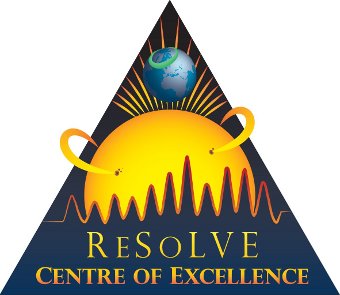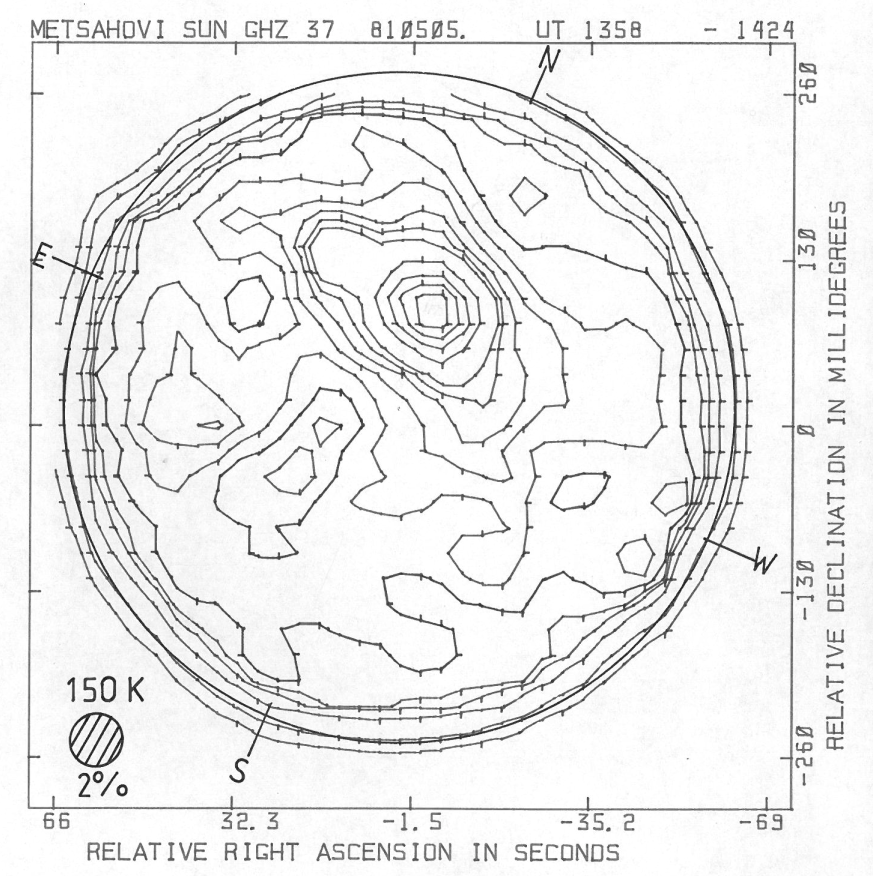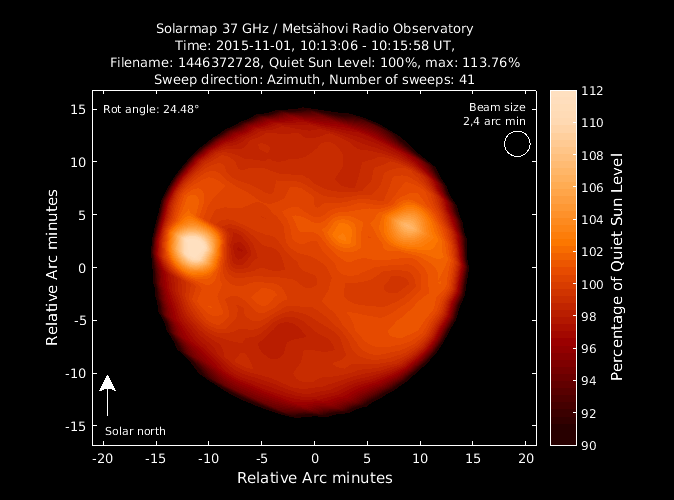
Astroinformatics
Open positions

Open positions - Update: both have now been appointed
In conjunction with the Metsähovi Observatory within the Aalto School of Engineering the group have a six month funded Master's Project 1 to commence immediately. Applicants should apply to frederick.gent@aalto.fi, with a brief summary of your relevant experience and qualifications. Questions relating to the project may be directed to Dr. Tammi or Dr. Gent.
Masters 1 - Digitise historical scanned solar maps
Job description: The observatory have decades of scanned historical data recorded in the form of line contours, which require digitising and interpolation into comprehensive 2D data arrays, for future automated data analysis. The task is further complicated, because the formats used on all scans vary (see the example illustrated).
We seek a suitably qualified candidate to program the automation of the processing of the existing scans into the required format, employing an appropriate machine learning based algorithm to cope with the variations in format, orientation of images and various fonts and formats for annotation.

In conjunction with the Metsähovi Observatory within the Aalto School of Engineering the group have a second Master's Project 2 to commence immediately. Applicants should apply to frederick.gent@aalto.fi, with a brief summary of your relevant experience and qualifications. Questions relating to the project may be directed to Dr. Tammi or Dr. Gent.
Masters 2 - Listing and categorising solar features from digitised solar radio maps
Job description: We seek a suitably qualified candidate to program the automation of the processing 2D data in two (or subsequent to our related Masters 1, three) digital formats, to identify and classify sunspots (see the example images). Our objective is to identify bright regions, recording their time of appearance, position (longitude and latitude), shape, size, structures, intensity, spot number ID (uniqueness), and time of disappearance. We will also need to be able to identify and account for atmospheric interference effects. Given the variety of formats, and the necessity to account for changes in atmosphere, and overall brightness, the adoption of machine learning techniques may be desirable.
Having effectively accumulated the data we wish to understand how surface intensity varies over time or with changes in magnetic activity. The candidate will be responsible for adapting existing tools, developing new tools or identifying new tools that can be developed. It is probable that these tools and skills will be transferable to many other applications, so should be of interest to the community outside astronomy and for other computer science applications.
